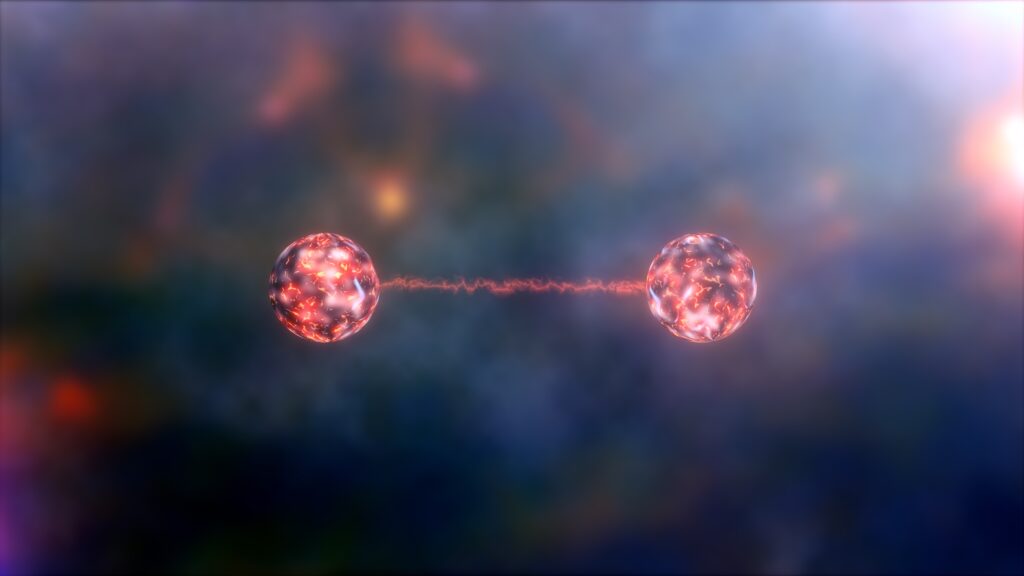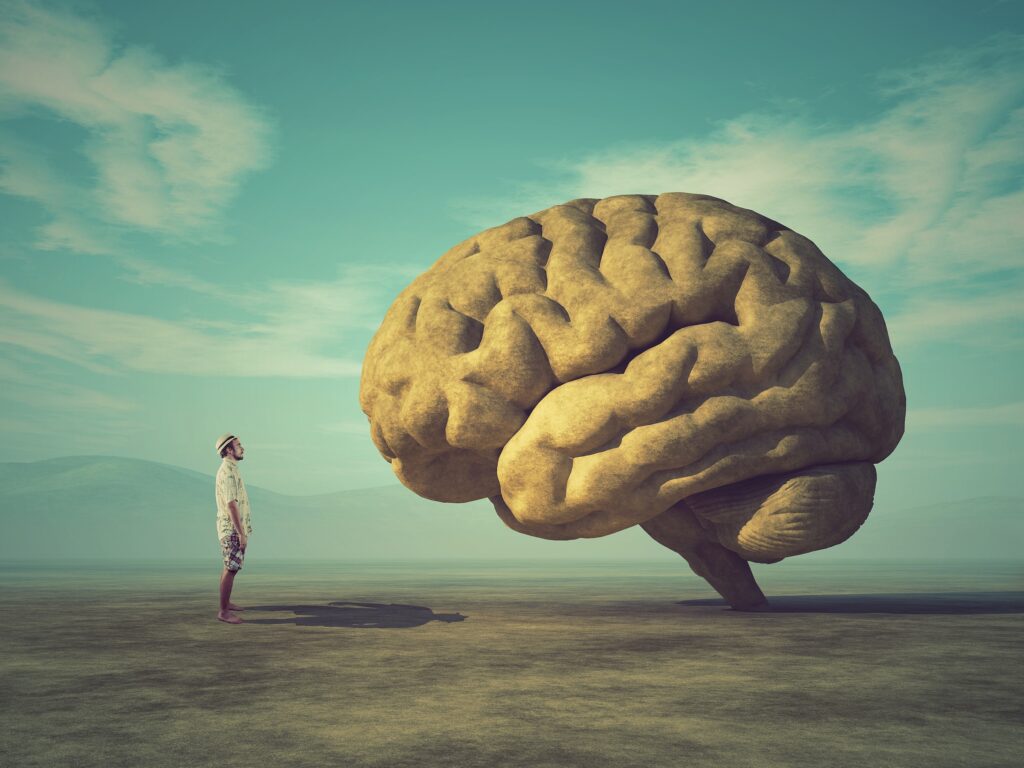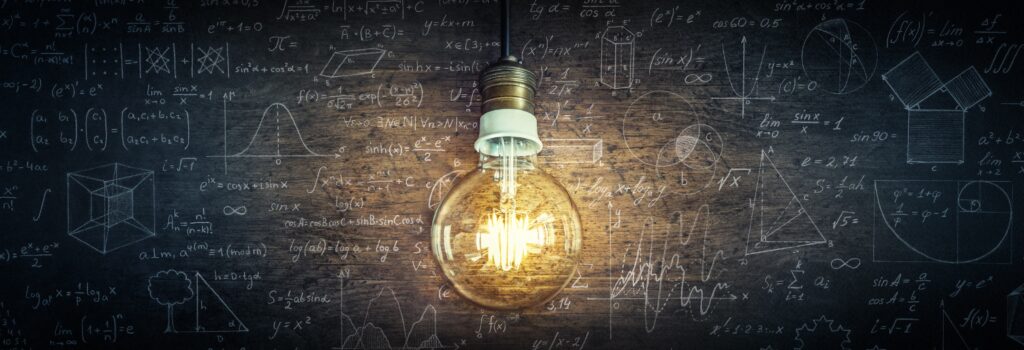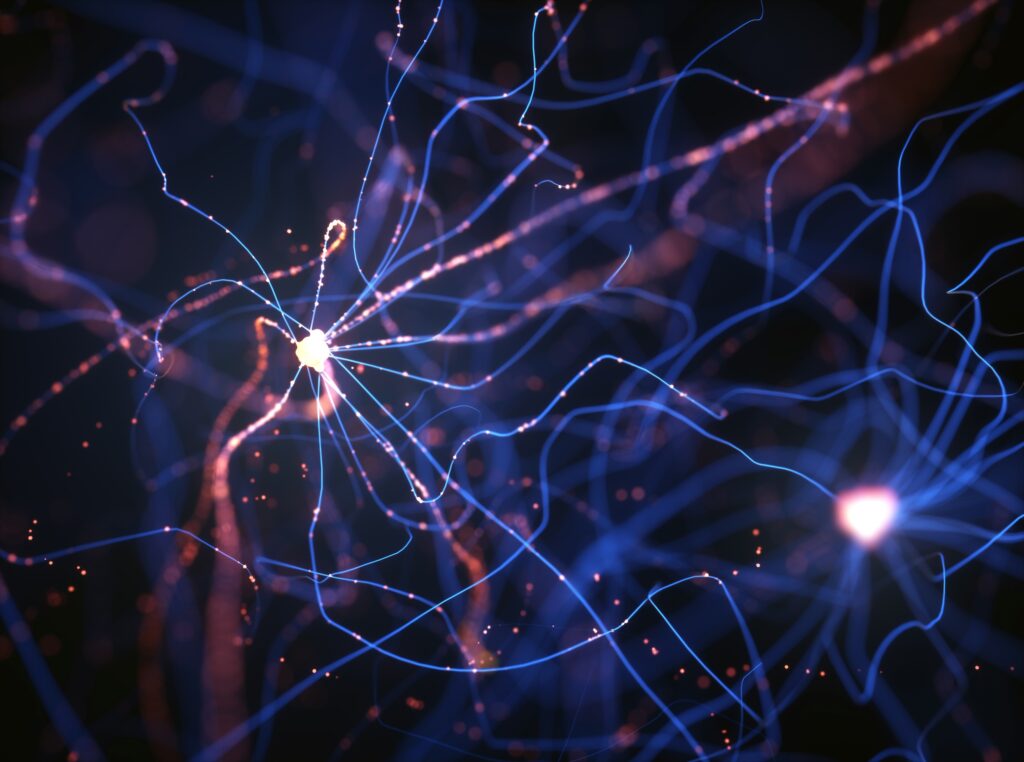Is reality made of language? The amazing connection between linguistic and physical structures
Reading | Metaphysics
![]() Dr. Ludwig Sachs | 2024-09-01
Dr. Ludwig Sachs | 2024-09-01
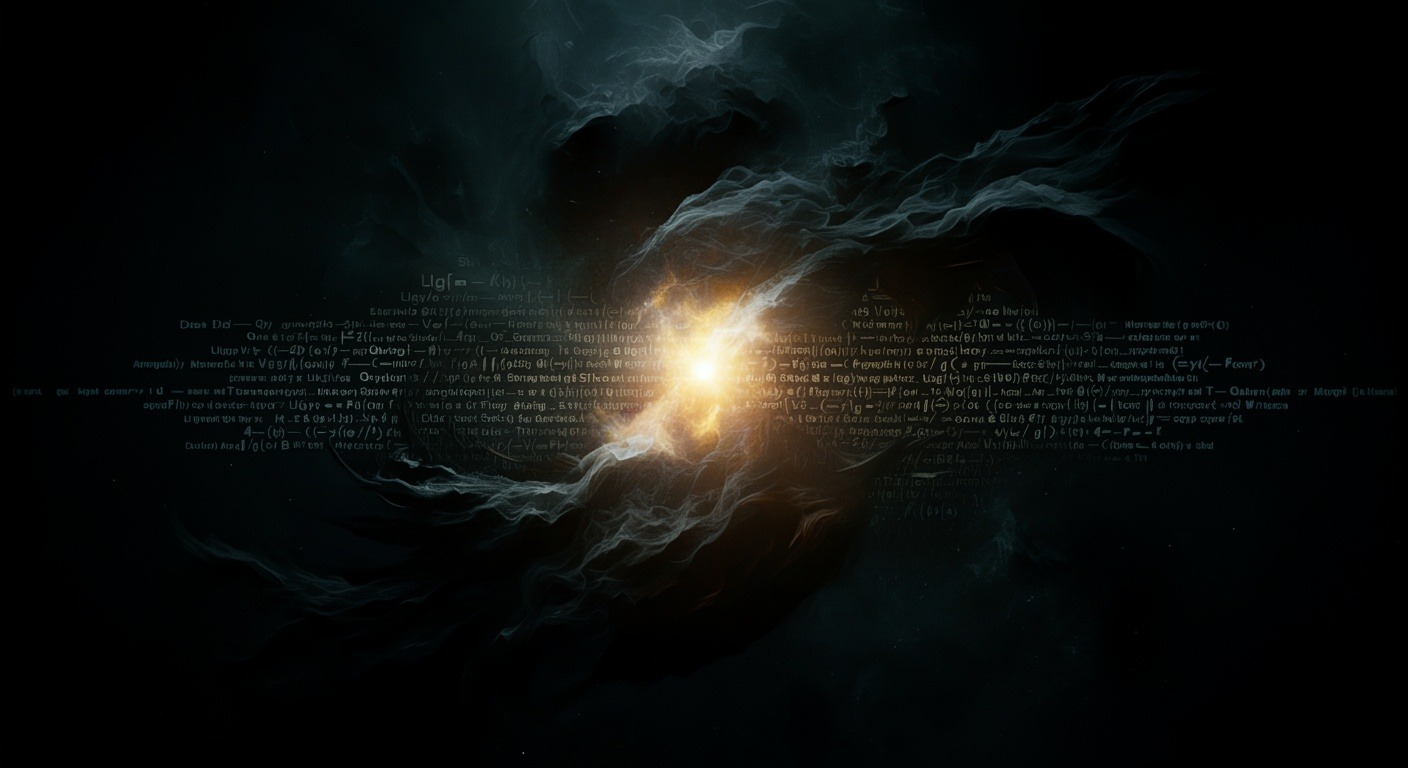
The structures of our language, which function as directly accessible carriers of meaning, reveal remarkable parallels to physical systems—particularly quantum systems—which can therefore be regarded as carriers of meaning as well. This profound interconnectedness of language, thought and reality challenge our conventional understanding of what is going on, argues Dr. Sachs. His insightful observations reveal surprising ways to make sense of the paradoxes of quantum mechanics along linguistic—and therefore thought-like—lines. Though involved, we highly recommend that you give this essay a careful read, as it is surely worth the effort.
As I have shown in previous articles,1 from a psychoanalytical perspective, our mental processes appear to be organized like linguistic structures. These semantic structures, consisting of signifiers, shape not only our individual perception, but also our entire life. The concept of meaning plays a central role here, including in our interaction with the world and the way we give meaning to our lives.
On the other hand, analytic idealism argues that the fundamental substance of reality is of a mental nature and that physical phenomena are to be understood as manifestations of mental processes. This view suggests that there is a profound self-similarity between the various manifestations of mental processes—from the most subtle thoughts to the tangiest material phenomena. This also requires us to question the nature of meaning.
Structural psychoanalysis and the construction of meaning: metonymy and metaphor
The structures of our language, which function as directly accessible carriers of meaning, reveal remarkable parallels to physical systems in their complexity and dynamics. These parallels enable a deeper understanding of reality and show how fundamental, language-like or semantic patterns shape the structure of the world itself.
In structural psychoanalysis, which was significantly influenced by Jacques Lacan,2 the concepts of metonymy and metaphor play a central role in the analysis of linguistic structures and the mental.
Metonymy is often understood as a ‘horizontal’ chaining and refers to the diachronic (temporal) arrangement of signifiers, e.g. letters and words arranged in a sequence. This arrangement determines the meaning of a statement. A change in this sequence can change the meaning significantly.
In contrast to this is metaphor, which stands for the ‘vertical’ chaining of signifiers and adds a synchronic dimension. This vertical level adds further levels of meaning and illustrates that meanings always refer to other meanings and never directly to the thing itself. The concept of metaphor shows the complexity of meaning formation, as the connection of signifiers creates a kind of barrier that prevents direct access to the signified (the meaning).
Another important element in this concept is the ‘point de capiton,’ the quilting point, which has the function of fixing the meaning within the chain of signifiers. This ‘quilting point’ is crucial as it retroactively determines the overall meaning of a statement and shows how the end of a signifier chain can fix the meaning of the entire message, for example the period at the end of this sentence.
Basic concepts of quantum physics
In quantum physics, some fundamental concepts3 play a central role that make it possible to understand and predict the behavior of subatomic particles. These concepts are not only important in physics, but also offer interesting connections to other sciences and philosophy.
A system in quantum mechanics is defined as any part of reality that can be, in some operational sense, isolated from the rest of the world and made the object of investigation. Systems can contain subsystems, which increases the complexity and variety of possible investigations. A simple example of a system is an electron in an atom, which can be considered and analyzed separately.
The state of a system in quantum mechanics describes its properties at a certain point in time. The state is fundamental to understanding its potential behaviors and the results of measurements. In quantum mechanics, the state is often described by a wave function that indicates the probability of measuring certain properties. This state description is essential for understanding how systems react and evolve in response to external influences.
Observables are measurable properties of a system that play a central role in quantum mechanics. They can relate to global properties of the entire system or locally to subsystems. The measurement of observables provides specific data about the state of the system. Examples of observables are the position, momentum and energy of a particle. These quantities can be determined by appropriate experiments and provide important information about the system.
Measurement is the act of observing and obtaining data about a system. In quantum mechanics, every measurement changes the state of the system, which leads to one of the fundamental and often considered paradoxical properties of this theory. This phenomenon is known as the collapse of the wave function, in which the state of the system changes from a superposition of many possibilities into a single, measured state. The outcome of a measurement depends on the state of the system and cannot be completely predicted, which gives quantum mechanics its probabilistic nature.
Integration of quantum concepts and linguistic structures
Looking at these concepts allows us to draw connections to other theoretical frameworks such as structural psychoanalysis and analytic idealism and thereby develop a more comprehensive understanding of reality.
The definition of a system in quantum mechanics has a direct counterpart in the structuring of linguistic phenomena. In linguistic analysis, a chain of signifiers, such as a sentence or a section of text, can be regarded as a system that can have different states. These states correspond to different meanings or interpretations that result from the specific arrangement and combination of words.
Similar to quantum mechanics, where systems can be subdivided into subsystems to refine the investigation, parts of a signifier chain can also be considered separately in order to analyze their specific contributions to meaning within a larger textual context. This possibility of a segmented analysis reflects the complexity and deep structure of both physical and linguistic systems.
In linguistic analysis, the term ‘state’ refers to the momentary interpretation or understanding derived from a chain of signifiers. Signifiers are the specific elements of language, such as words or letters, which together construct certain meanings. This notion of state is comparable to the concept in quantum mechanics, where the state of a system defines its properties at a given time and largely determines how the system behaves and what results can be expected from measurements.
In both domains—quantum physics and linguistics—knowledge of the state essentially determines the expectations of an interaction or observation. In the field of language, the understanding of the meaning structure of a text—i.e., its ‘state’—influences how this text is interpreted. This interpretation can change when new information is added or the context in which the chain of signifiers is analyzed changes. This is similar to a change of state in quantum mechanics, which can be induced by a measurement, whereby the measurement result changes the previous understanding of the system.
The analogy between local and global observables
In quantum physics, a distinction is made between local and global observables, which provide insights into the structure and behavior of systems. Local observables refer to specific, isolatable properties or states within a subsystem, while global observables describe the properties of the system as a whole and provide insights that result from the totality of the system components.
A similar distinction can be found in linguistics, where local observables can correspond to individual sentences, words or letters within a text sequence. These local elements are often embedded in and influenced by higher-level structures of the text in which they appear. Global observables in language correspond to the overall system of the text or discourse, whose structure and overarching themes shape the interpretation and meaning of the individual local elements.
Measurement and construction of meaning
In the context of language analysis, ‘measurement’ takes place through the interpretation of the signifier chain. The aforementioned ‘point de capiton,’ the ‘quilting point,’ plays a crucial role as a fixing point that (apparently) closes the meaning of an expression. Similar to a measurement in quantum physics, which changes the state of a system, the interpretation of a text can also modify the original meaning. However, the apparent fixation caused by the quilting point is in the end illusionary, as it only temporarily brings the differential reference structure of the signifiers to a halt.
This dynamic interaction between observation and state can be applied to quantum physics as well as to linguistic and psychological processes. In both areas, it can be seen that the fixation of meaning or state always depends on the specific conditions of measurement or interpretation and thus represents a kind of illusionary stabilization in a sea of potentialities.
Structures of linguistic analysis: diachronic and synchronic chains
As already mentioned, in linguistics and in structural psychoanalysis in particular, a distinction is made between the diachronic (‘horizontal’) and the synchronic (‘vertical’) chain, which together form the complex fabric of language structure. The diachronic chain refers, so to speak, to the conscious, sequential flow of language. Here, words and sentences are arranged in a logical and temporal sequence. This structure can be directly measured and consciously comprehended, as it is presented in an explicit and linear form that is easy to follow.
In contrast to this is the synchronic chain, which is based on deeper connections between different elements of the language. These connections are manifested through the metaphorical function. The synchronic chain is less obvious and often eludes immediate comprehension because it operates on a more complex level. This level is rich in cultural, historical and contextual meanings that go far beyond the simple sequence of words and thus open up a deeper dimension of language analysis.
The distinction between these two chains is crucial for understanding how language-like structures influence our mental processes. While the diachronic chain represents the surface of our linguistic expression, the synchronic chain holds the latent structures that are the real force behind our linguistic creativity and metaphorical expression. These latent and mostly unconscious structures include not only individual or personal content, but are also deeply rooted in collective cultural and historical patterns that shape our interpretation of texts and our expression.
Structural parallels in quantum mechanics and language analysis
In quantum mechanics, we find analogous concepts to the distinction between diachronic and synchronic chains in language structure, expressed through the relationship between causality and acausality, and between facticity and potentiality.
Causality in quantum mechanics is similar to the diachronic chain in linguistics. In classical physics, events are regarded as causal sequences in which the states are clearly determined by previous events and form a measurable, deterministic sequence. This corresponds to the sequential nature of the diachronic chain, in which each word or sentence construction is based on logical and temporally sequential connections.
In quantum mechanics, however, there are phenomena such as entanglement that cannot be explained by local causality principles. Entangled particles influence each other in a way that is independent of spatial distance and without any recognizable causal connection. This type of acausal connection mirrors the synchronic chain in language structure, where deeper, metaphorical or symbolic relationships exist that are not directly apparent from the linear sequence of words.
Facticity in quantum mechanics refers to the measured state of a system that reflects a concrete, measurable property. This is comparable to the explicit meaning captured in the diachronic analysis of a text. Potentiality, on the other hand, includes the totality of all possible states that a quantum mechanical system can assume before a measurement, represented by the wave function. This range of possibilities corresponds to the variety of meanings and interpretations that are present in the synchronic chain before an (apparently) final interpretation is fixed by the ‘point de capiton.’
Limits to the transmission of information
In linguistics, the diachronic structure manifests itself through the sequential arrangement of words and sentences that build on each other causally and enable a direct transfer of information. This structure is analogous to measurable, causal states in quantum mechanics, where events take place in a predictable sequence. The ‘quilting point’ in structural psychoanalysis enables a temporary fixation and apparent transmission of meaning within this causal chain. This transmission appears concrete and measurable, but is ultimately a constructed and interpretative effect—in the language of structural psychoanalysis, it is imaginary.
The synchronic structure, represented in language by metaphors and symbolic language, reflects a deeper level of meaning linkage that is not limited by linear causality. This structure is comparable to quantum entanglement, where particle states are linked in a way that does not allow for direct, causal transmission of information, as described by the ‘no-communication theorem’4 of quantum information theory. In structural psychoanalysis, the concept of the ‘barrier’ between signifier and signified forms a similar boundary, as it prevents a direct transmission of unambiguous meaning and keeps communication on an interpretative and ambiguous level.
Diachronic and synchronic analysis in language and quantum physics shows that, while information transmission in causal structures appears possible, it is ultimately dependent on interpretative processes, which in turn are influenced by contextual factors. Acausal structures, on the other hand, offer a rich field of potential meanings that do not allow direct or unambiguous transmission. These insights highlight the complex mechanisms of meaning and information construction in both disciplines and emphasize the profound interconnectedness of language, thought and reality that challenge our conventional understanding of reality.
Quantum ontology and the structure of reality
In quantum ontology, especially as described by Hartmann Römer,5 observables are not mere mathematical constructs that describe certain measurable properties of a physical system, but rather fundamental components that structure our understanding of reality. These observables are closely linked to propositions, which represent the actual knowledge about the states of a system. Each proposition indicates what result the measurement of a particular observable could produce. They are therefore dependent on the observables, as they would have no meaning without them.
The relationship between observables and propositions shows that they form a connection that is essential for the description of physical states and for understanding the structure and dynamics of the quantum world. Römer describes this connection as a “propositional ontology,” in which the world is not defined by fixed facts, but by propositions: statements that represent potential truths.
Dualism of observables and the ‘Ur alternatives’
The observables in Römer’s description are dualistic and similar to Carl Friedrich von Weizsäcker’s “Ur alternatives,”6 which are based on fundamental yes/no choices. This binary structure is mirrored in the differential and discrete nature of the unconscious as presented in structural psychoanalysis. The unconscious is described as a structure of signifiers that is not defined by its own substance, but by its relation to and difference from other signifiers.
Epistemic cut
In Hartmann Römer’s study of quantum ontology, Heisenberg’s cut is emphasized as a fundamental separation line within epistemology. This epistemic cut, which lies irrevocably between the recognizing subject and the object to be recognized, reveals the fundamental limits of our knowledge. According to Römer, the recognized is always located beyond this cut, whereby the recognizing instance can never fully grasp itself and remains limited to the role of a “transcendental subject” that cannot transcend its own basis of knowledge.
Archetypes, signifiers and observables: a structural similarity
In his research, Hartmann Römer discusses the interesting parallelism between Carl Jung’s archetypes and the observables of quantum physics. Römer argues that both archetypes and observables are structurally positioned, so to speak, on the cutting edge of the epistemic cut, the boundary that separates the recognizing subject from the recognized. He states that observables and propositions are to be understood as the constituent elements of the quantum world that exist primarily potentially rather than factually. These are beyond the conventional subjective-objective duality and represent entanglement-like relationships of similarity at the most general level.
Römer’s analysis of archetypes as expressions of the potentiality and complementarity of quantum observables shows the profound structural similarity between these concepts. The characteristic ambivalence of archetypes reflects the dualistic nature of observables and illustrates the complex interaction of structure and subject.
In structural psychoanalysis, Heisenberg’s cut is illustrated by the interaction of the signifier with the order of the real1, similar to a plowshare plowing through the soil. This illustrates how the signifier excavates the signified (the meaning) from the real and how the subject is structured in a language-like manner. Such a dynamic also reflects the constitutive split of the subject, a split based on a traumatic experience and primal repression. This, in turn, leads to a dynamic of lack and desire that persists without a halt and reveals the real as the logically impossible and unsymbolizable.
The interweaving of language, psyche and physics
The interweaving of language, psyche and physics, as revealed by structural psychoanalysis, analytical idealism and quantum ontology, shows that these disciplines have deep structural parallels. Examining these parallels allows us to develop a broader and deeper understanding of reality that encompasses both physical and psychological dimensions. Recognizing that reality is shaped by complex and often counterintuitive processes that challenge our conventional understanding of causality and determinism can lead to new approaches and perspectives in science and philosophy.
Perspective of Formalization
To further formalize the theoretical considerations and connections between language, psyche, and physical reality, various mathematical concepts can be employed. One of the most innovative and promising tools is the use of perfectoid spaces.7
Perfectoid spaces, introduced by Peter Scholze, who was awarded the Fields Medal in 2018, are a highly abstract concept from modern algebraic geometry and offer extensive possibilities for modeling complex structures. In our context, perfectoid spaces could be used to capture and analyze both the dynamic and static aspects of linguistic and psychic structures.
The consideration of p-adic numbers, which form the basis for perfectoid spaces, allows for modeling complex structures and self-similarities that reflect the differential nature of signifiers in structural psychoanalysis. The p-adic numbers provide a representation where the classical continuum is questioned, similar to how the concept of self-identity is problematized in psychoanalysis. Both concepts work with structures that cannot be represented by a simple, continuous line but by a complex interplay and interaction of elements connected on different levels. Thus, p-adic numbers reflect the fractal and self-referential properties of signifier structures. These mathematical concepts provide a suitable foundation to formally capture and analyze the connections between language, psyche, and physical reality, particularly concerning the fractal and self-referential properties of these structures.
Conclusion
The investigation of the profound parallels between language, psyche, and physical reality, as illuminated by structural psychoanalysis, analytical idealism, and quantum ontology, shows us that these disciplines cannot be considered in isolation. Examining these interdisciplinary approaches enables a more comprehensive understanding of reality and highlights the complex mechanisms that shape our consciousness and perception.
Continued exploration of these interfaces will improve our ability to understand the nature of reality, meaning, and consciousness, and to further uncover the deep connections that interweave these domains. This opens doors to new perspectives that can fundamentally expand our knowledge and interactions with the world.
Bibliography
- https://www.essentiafoundation.org/the-subject-beyond-the-i-on-structural-psychoanalysis/reading/
https://www.essentiafoundation.org/metabolism-is-what-the-unconscious-mind-looks-like/reading/ - e.g. https://www.lacanonline.com/ or https://lacan-entziffern.de/ (German)
- Filk, T., Römer, H. Generalized Quantum Theory: Overview and Latest Developments. Axiomathes 21, 211–220 (2011). https://doi.org/10.1007/s10516-010-9136-6
- https://en.wikipedia.org/wiki/No-communication_theorem
- Quanten, Komplementarität und Verschränkung in der Lebenswelt. Verallgemeinerte Quantentheorie, Lit Verlag Münster, ISBN 978-3-643-5378-4 https://www.anomalistik.de/images/pdf/schriften/perspektiven7_inhalt.pdf (free download)
- https://en.wikipedia.org/wiki/Carl_Friedrich_von_Weizs%C3%A4cker
- https://youtu.be/RApkRqoiZ1I?si=9rYnIYKzSulDns7N (an illustrative introduction to the topic)

Essentia Foundation communicates, in an accessible but rigorous manner, the latest results in science and philosophy that point to the mental nature of reality. We are committed to strict, academic-level curation of the material we publish.
Recently published
Reading
Essays
Seeing
Videos
Let us build the future of our culture together
Essentia Foundation is a registered non-profit committed to making its content as accessible as possible. Therefore, we depend on contributions from people like you to continue to do our work. There are many ways to contribute.






